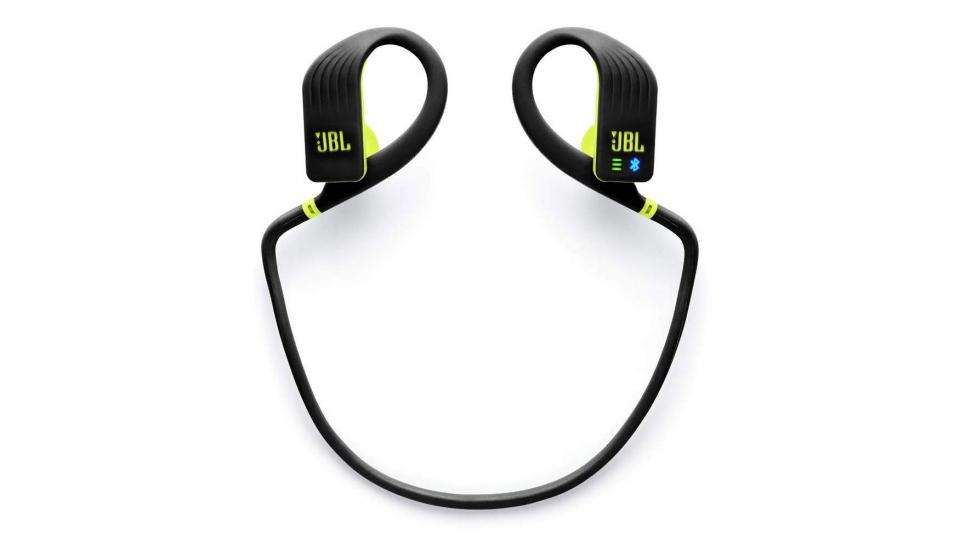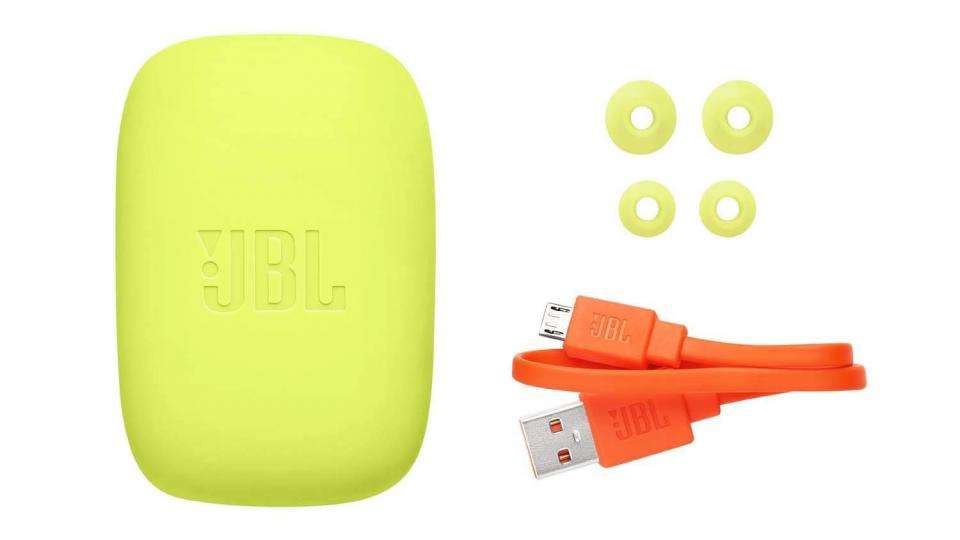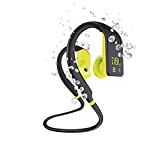Listening to music when walking, running, jumping or indeed performing any other form of exercise is easier than ever since the advent of Bluetooth headphones, so why should swimming be any different?
Swimming headphones, which use built-in music players to overcome the technical challenges of wireless streaming, are not as uncommon as you might think. And JBL has recently thrown its hat into the ring with the Endurance Dive, a pair of earphones it claims function just as well in the pool as on dry land.
So has the American audio specialist made a splash with its underwater earphones? Let’s take a closer look.
JBL Endurance Dive review: Price and competition
Endurance Dive are available to buy for £90 from JBL’s official website or £107 from Amazon.
Buy now from JBL | Buy now from Amazon
The leading SwiMP3 player currently on the market is Finis’ Duo , which will set you back around £90, depending on where you buy them. Other affordable options worth considering include Sony’s NW-WS413 (£70) and i360 (£45).
JBL Endurance Dive review: What you need to know
The Endurance Dive sit at the upper end of JBL’s Endurance in-ear sports headphone range, at least in terms of price, with only the manufacturer’s Endurance Peak true wireless earphones (£130) costing slightly more.
Being swimming headphones, the Endurance Dive are IPX7 water-resistant and designed with underwater comfort in mind, using JBL’s TwistLock technology to ensure they stay snugly in place at all times.

They have a built-in MP3 player with 1GB of storage, meaning you can store up to 200 songs on the headphones. However, when you’re not in the pool they can also connect via Bluetooth to any compatible device. A single touch button on the right earbud allows you to control your music and also enables for hands-free calling.
JBL Endurance Dive review: Design
JBL’S Endurance Dive are available in black and yellow. The yellow pair I was sent are, in my opinion, the more aesthetically pleasing of the two. At the very least, the neon colour scheme means you should be less likely to misplace your earphones at the bottom of your gym bag.
The headphones’ chunky earbuds are linked via a single cable that sits on your neck, which makes for a simple, clean look. There’s no separate housing for the MP3 player or control buttons, because both are integrated within the earpieces.
Included in the box alongside the headset are two “enhancers”, which sit behind the main earbud and help to create a vacuum around your ear. There’s also a handy durable silicone case for transport, as well as three interchangeable ear tip sizes, so you can find the best fit for your ears.
To achieve a secure fit, JBL has also patented what it calls TwistLock technology. This is a mechanism that creates a snug vacuum seal when you twist the headset into position after placing the earbuds in your ears. To JBL’s credit, I found it worked really well.

I’m a big fan of the earphones’ PowerHook technology, too. The hook on each earpiece is designed to magnetically attract to the main earbud when you’re not wearing the headset, automatically powering off in the process. It’s a neat design that should save you a good chunk of battery life.
Finally, and somewhat predictably given that these are swimming headphones, the Endurance Dive feature IPX7 protection. This means that the headset can withstand being 1m below the surface for up to 30 minutes.

JBL Endurance Dive review: Features
JBL’s Endurance Dive have all the features you would expect from any wireless sport earphones. Bluetooth connectivity allows you to play music straight from your smartphone or other device with a quoted eight hours of battery life. You can also make hands-free calls, although this drains the battery slightly faster.
Both music playback and hands-free calling are controlled using a single button on the right-hand side of the headset. One tap plays/pauses music, two skips forward and three jumps back a track. During a call, on the other hand, it takes one tap to answer/hang-up and two to reject.
If you try to use Endurance Dive’s Bluetooth function in the pool, you’ll soon find the connection becomes unreliable and the music repeatedly cuts out. That’s no fault of JBL’s, but rather a limitation of Bluetooth technology – consumer devices have a range little greater than 10m in most cases.
To counteract this problem, most swimming headphones have built-in MP3 players with local storage. In Endurance Dive’s case, this comes in the form of a 1GB player, which can store around 200 tracks. To move songs to the headphones, you can simply connect them to your PC using the provided USB charging cable and drag-and-drop the files in question.
That’s easy enough, but unless you’ve got a hefty MP3 library, this will likely represent little more than an inconvenience. The problem is further compounded by the fact that you have no control over the order in which you listen to the tracks before you get into the pool.
Sadly, though, with no offline support for Spotify or other streaming services, these are the compromises you’ll have to live with if you want to be able to listen to songs in the pool.
JBL Endurance Dive review: Performance and comfort
The first thing that struck me when testing Endurance Dive is how comfortable they felt, irrespective of what I was doing. When running, they stayed firmly in place, and the cable connecting the two buds sat lightly enough on my neck to remain comfortable.
It was much the same story in the pool, too. Whether you’re doing front crawl, breaststroke or backstroke the earphones remain firmly in place. There was little-to-no water seepage throughout, either.
Sound quality, although nothing to write home about, remained consistent whether underwater or out in the open air, too. Given that these earphones are designed with swimmers rather than audiophiles in mind, they deliver everything you could really hope for in this sense.
However, what lets the Endurance Dive down is their fiddly and unresponsive controls. Whilst running, it’s easy enough to connect up via Bluetooth and flick through your songs or control volume by using the control button on the right bud.
Unfortunately, though, when using the MP3 setting, you don’t have that luxury. JBL advises you to lock Endurance Dive’s controls before getting into the pool, but even doing this was a struggle, leaving me stranded by the poolside for a good two or three minutes. Even during a run, I struggled to successfully skip tracks using the single button on the earbud.
JBL Endurance Dive review: Verdict
Endurance Dive are a comfortable pair of sport earphones that offer better-than-average sound quality. It’s a shame that they’re so difficult to control.
I can’t help but think that the headphones would be easier to use if they used multiple responsive buttons, as the Finis Duo do, rather than a single touch-sensitive button. Considering that rival headphones cost exactly the same as Endurance Dive and offer four times as much storage and it becomes quite difficult to fully endorse JBL’s swimming headphones.
|
Key specifications |
|
Headphone subtype |
In-ear headset |
|
Ear tip material |
Silicon |
|
Bluetooth version |
4.2 |
|
Drive size (mm) |
10 |
|
Drivers per ear |
1 |
|
Battery type |
Lithium-ion polymer (3.7V, 120mAh) |
|
Charging time from empty (stated) |
2hrs |
|
Playtime with Bluetooth on (stated) |
8hrs |
|
Talk time with Bluetooth on (stated) |
7hrs |
|
Price |
£90 |